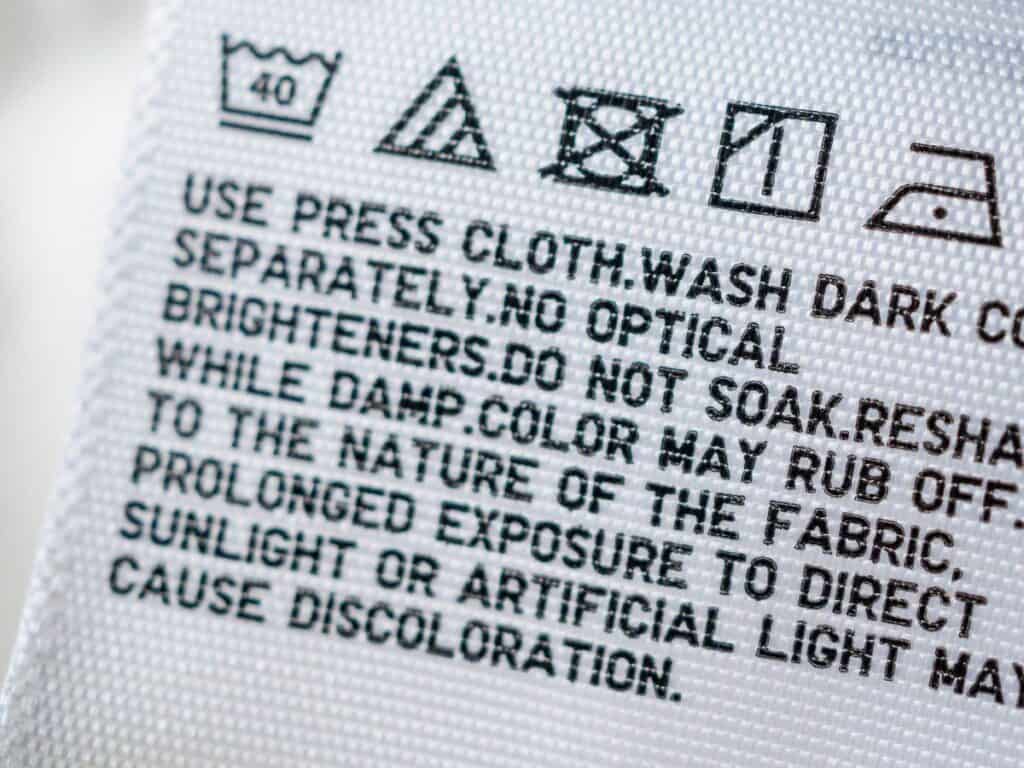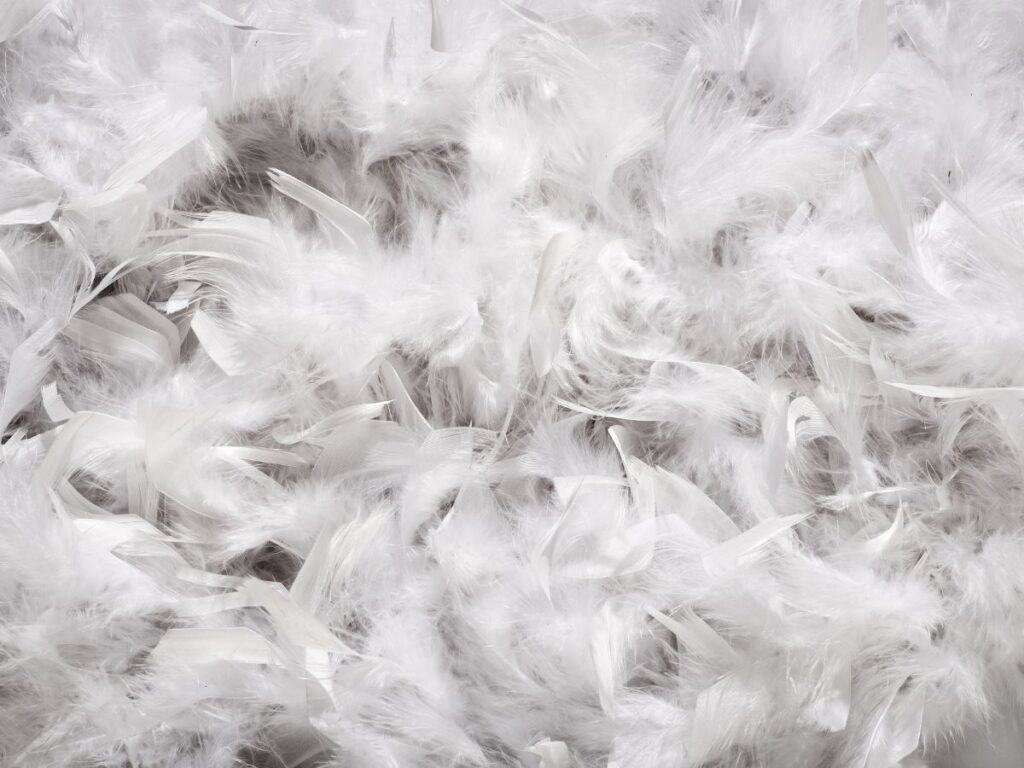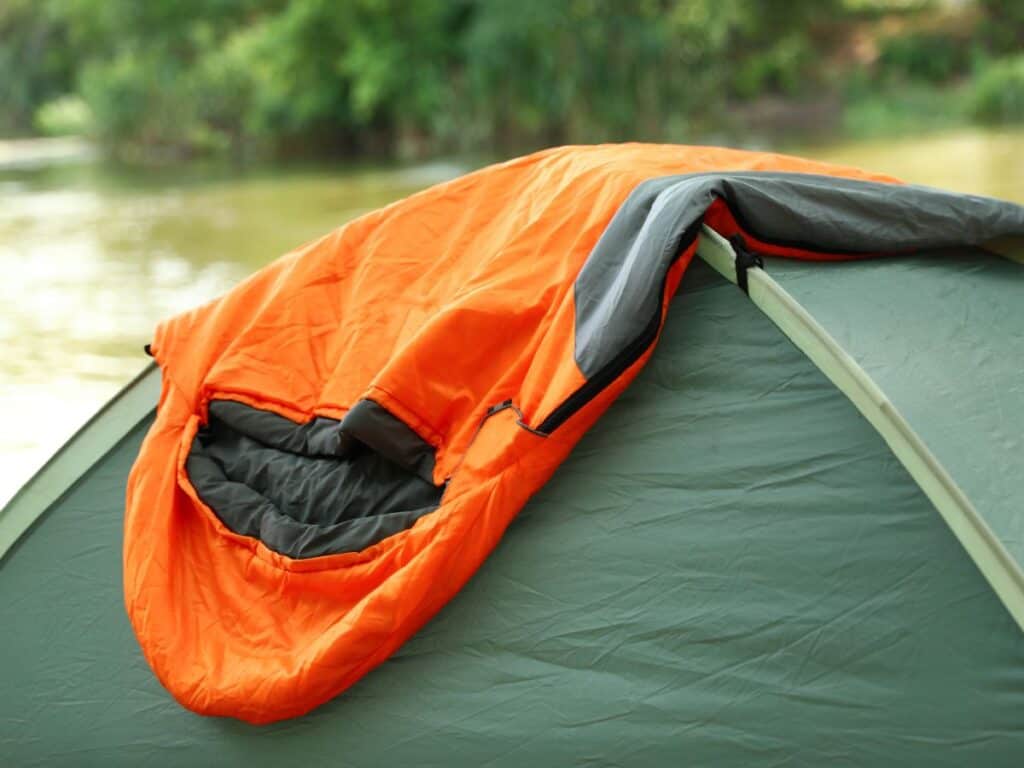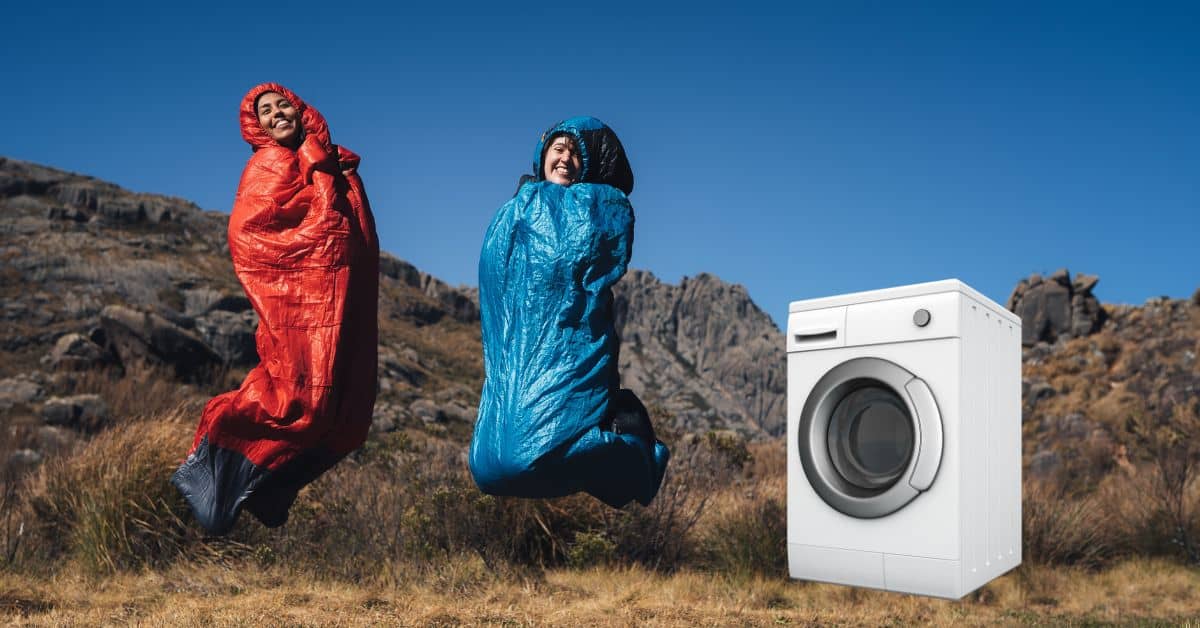There’s nothing quite like the comfort of sliding into a clean, fresh-smelling sleeping bag after a long day of hiking or when wild camping. Over the years, I’ve had my fair share of adventures and if there’s one thing I’ve learned, it’s that taking good care of your gear, especially your sleeping bag, can make all the difference in the world.
But, just like any piece of outdoor gear, they need a bit of TLC. So if you’ve ever wondered how to wash a sleeping bag, you’re in the right place.
In this guide, we’ll delve into the ins and outs of washing a sleeping bag and how to dry it correctly too, ensuring it’s ready for many more adventures to come.
So, let’s dive in and get that bag clean and fresh!
Disclaimer: If you make a purchase via the links on our site, I may earn an affiliate commission at no additional cost to you. You can read my affiliate disclosure in the privacy policy. Thanks for your support!
How to Wash a Sleeping Bag
Read the Care Label

Before diving into the washing process, always start by checking the care label on your sleeping bag. Manufacturers often provide specific instructions tailored to the bag’s materials and construction. Ignoring these can lead to damage or reduced lifespan for most sleeping bags. So, always give that label a glance—it’s there for a reason!
Check What Insulation Your Sleeping Bag Has

Understanding the insulation type of your sleeping bag is crucial. There are primarily two types: synthetic and down. Synthetic sleeping bags are generally more forgiving to wash and dry, while down bags require a gentler touch to maintain their loft and warmth.
Knowing which one you have will guide your washing and care approach, ensuring your bag stays in top condition for many adventures to come.
How to Wash a Synthetic Sleeping Bag
Synthetic bags are popular for their durability and ease of care. However, to ensure they last for many adventures, it’s essential to wash them correctly. Here’s a step-by-step guide:
How to Machine Wash a Synthetic Sleeping Bag
Preparation: Turn the synthetic sleeping bag inside out. This helps protect the outer shell and ensures a thorough clean.
Detergent: Use a non-detergent soap or a cleaner specifically designed for sleeping bags.
Water Temperature: Use cool to warm water. Hot water can damage the synthetic fill.
Cycle: Opt for a gentle cycle to prevent any potential damage to the sleeping bag’s shell or insulation.
Loading: If you have a front loading washer, place the bag inside. Avoid top loading washing machines with agitators, as they can cause damage.
Extra Rinse Cycle: After the wash, run an extra rinse cycle to ensure all the soap residue is removed.
How to Hand Wash a Synthetic Sleeping Bag
Preparation: Ensure the bath is clean. Remove any residues or products that might transfer to the sleeping bag the fill a bathtub or large basin with cool or warm water.
Detergent: Add a small amount of non-detergent soap.
Washing: Gently agitate the water and submerge the sleeping bag. Gently squeeze and press the bag to ensure the soap penetrates the fibres.
Rinsing: Drain the soapy water and refill with clean water. Rinse the synthetic bag by pressing it, ensuring all the soap is removed. Repeat this process until the water runs clear.
Remember, after washing, it’s essential to dry your synthetic sleeping bag properly to maintain its insulation properties and prevent mold or mildew growth. More on that soon.

How to Wash a Down Sleeping Bag
Down sleeping bags are renowned for their superior warmth and lightweight properties. However, they demand special care to maintain their loft and performance.
Hand Washing a Down Sleeping Bag
Preparation: Begin by shaking out your down bag to remove any loose dirt or debris. Ensure you have a clean bathtub or a large basin.
Water Temp: Fill the tub with cool to warm water. Hot water can damage the down clusters.
Detergent: Opt for a non-biological detergent as using biological detergents can deteriorate the down insulation, compromising its warmth and loft. Alternatively, use a down-specific cleaner.
Washing: Submerge the sleeping bag, gently pressing and kneading it to ensure the soap penetrates the down clusters.
Rinsing: Drain the soapy water and refill with clean water. Rinse the down bag multiple times, pressing gently each time, until all detergent is removed.
Remove Water: Gently squeeze the sleeping bag to remove excess water. Avoid wringing it, as this can damage the down clusters.
Machine Washing a Down Sleeping Bag
Machine Type: Opt for a front-loading washing machine. A top loading washing machine with agitators can damage the bag.
Detergent: As before, use a non-biological or a down-specific detergent to maintain the integrity of the down.
Cycle and Settings: Set the machine to a delicate cycle with cool or warm water. Ensure the spin cycle is set to low to prevent excessive agitation.
Rinsing: Run an extra rinse cycle to ensure all detergent is removed.
Removing Water: After the rinse, use a low spin cycle to remove excess water without damaging the down.
Proper drying is essential for down sleeping bags. Wet down clusters can clump together, reducing the bag’s insulating properties. Always ensure your down bag is thoroughly dry before storage to maintain its loft and warmth.

Washing a Sleeping Bag Liner
Sleeping bag liners not only add an extra layer of warmth but also protect your sleeping bag from body oils and dirt, extending its lifespan. Given their frequent contact with our skin, they often need more regular cleaning. Here’s how to do it right:
Preparation: Shake out the liner to remove any loose debris.
Machine Washing: Most sleeping bag liners can be machine washed. Use a gentle cycle on a low water temperature. Add a mild detergent, avoiding fabric softener as it can affect the liner’s wicking properties.
Hand Washing: Fill a basin with cool water and add a small amount of mild detergent. Submerge the liner, gently agitating the water and rubbing the fabric together to clean then rinse thoroughly until all soap is removed.
Drying: Sleeping bag liners typically dry quickly. Hang them in a shaded area or tumble dry on a low heat setting, if the care label permits.
Remember, regular cleaning of your liner not only ensures a comfortable sleep but also reduces the frequency with which you’ll need to wash your sleeping bag.
Treating Stains on a Sleeping Bag
For common outdoor stains like mud, first let it dry and then brush it off gently. For sap, place an ice cube on it until it hardens and then scrape it away. Always spot test any cleaning solution on an inconspicuous area of your sleeping bag before treating the stain. Remember, it’s easier to treat a stain immediately rather than letting it set in!
Should You Dry Clean a Sleeping Bag?
While dry cleaning may seem like a convenient option, it’s generally not recommended for sleeping bags. The harsh chemicals used in dry cleaning can strip the natural oils from down insulation and degrade synthetic materials, reducing the bag’s loft and overall performance. Instead, it’s best to hand wash or machine wash your sleeping bag following the manufacturer’s instructions to ensure its longevity and effectiveness.
Drying Your Sleeping Bag
After washing, drying your sleeping bag correctly is crucial to maintain its insulation properties and ensure longevity. Whether you’re using a tumble dryer on a low heat or air drying, here’s how to do it right:
Tumble Dry Method
Preparation: Before tumble drying, gently squeeze out any excess water. Do not wring the bag, as this can damage the insulation.
Detergent Residue: Ensure all detergent residue is removed during washing, as any leftover can affect the bag’s performance when heated.
Dryer Settings: Set your dryer to a low heat setting. High temperatures can damage both synthetic and down insulation.
Tennis Balls Trick: For down sleeping bags, throw in a couple of clean tennis balls or dryer balls. They help break up down clusters that might clump together, restoring the bag’s loft.
Check Periodically: Every 20-30 minutes, check the bag and manually break up any clumps, especially for down bags.
Completion: Ensure the bag is completely dry before storage. Even slight moisture can lead to mold or mildew growth.
Air Dry the Sleeping Bag
Preparation: Lay the sleeping bag flat on a clean surface, preferably outdoors but away from direct sunlight, which can degrade the fabric.
Air Circulation: Ensure there’s good air circulation. This aids in faster drying and prevents any musty odours.
Fluffing: For down sleeping bags, fluff the bag periodically to break up any down clusters and restore loft.
Check for Moisture: Before storing, ensure no moisture remains. Pay special attention to seams and zippers, where moisture can hide.
Storage: Once completely dry, store your sleeping bag in a breathable cotton storage sack or mesh bag or hang it in a cool, dry place.
Remember, proper drying is just as crucial as the washing process. Taking the time to dry your sleeping bag correctly ensures it’s ready for your next adventure.
Final Thoughts
Taking care of your sleeping bag is an investment in many more comfortable nights under the stars. Whether it’s synthetic or down, proper cleaning and drying techniques ensure its longevity and performance. Remember, the outdoors awaits, and with a well-maintained sleeping bag, you’re always ready for the next adventure.
Safe travels and happy camping!

About the Author
Steve Cleverdon is an adventure blogger dedicated to helping outdoor enthusiasts make the most of their outdoor experiences. With years of travel and many epic adventures including a 3000-kilometre solo hike across New Zealand, Steve has amassed practical knowledge on outdoor gear. You can learn more about his adventures here. Through expert reviews, recommendations, and guides, he equips his readers with the best gear for their next adventure. If you want to send Steve a quick message, visit his contact page here.




